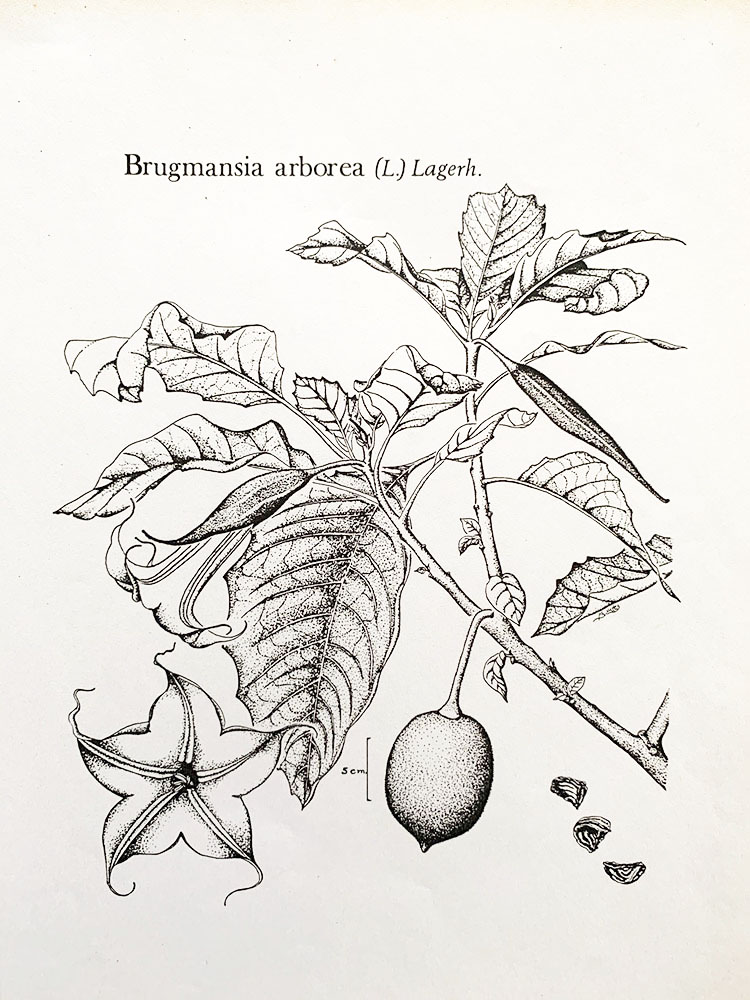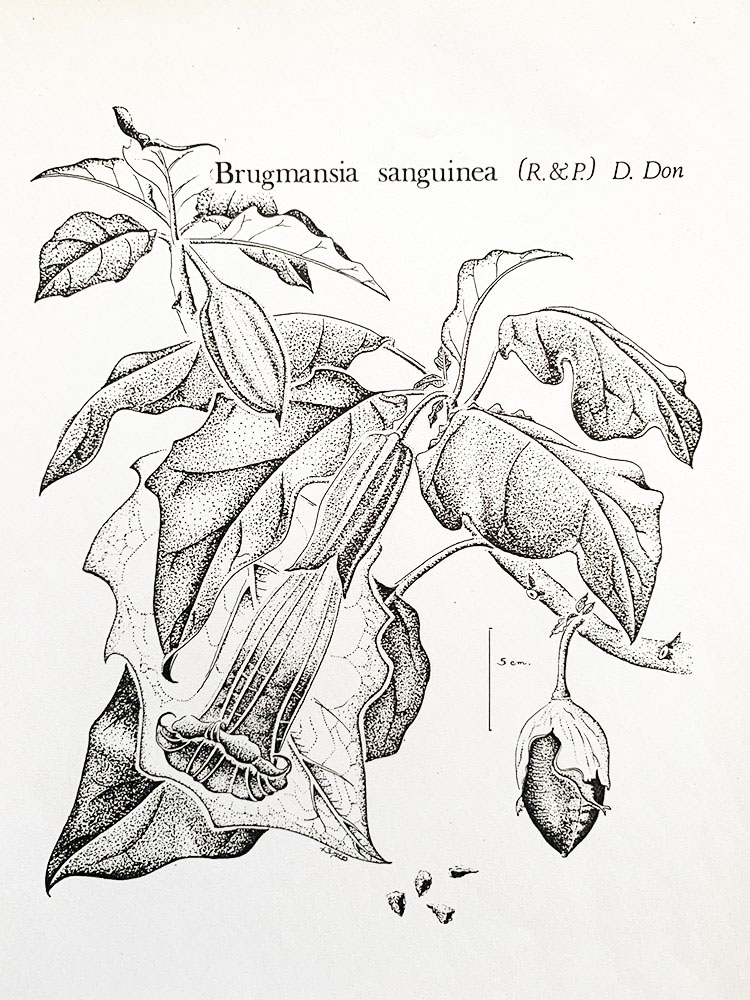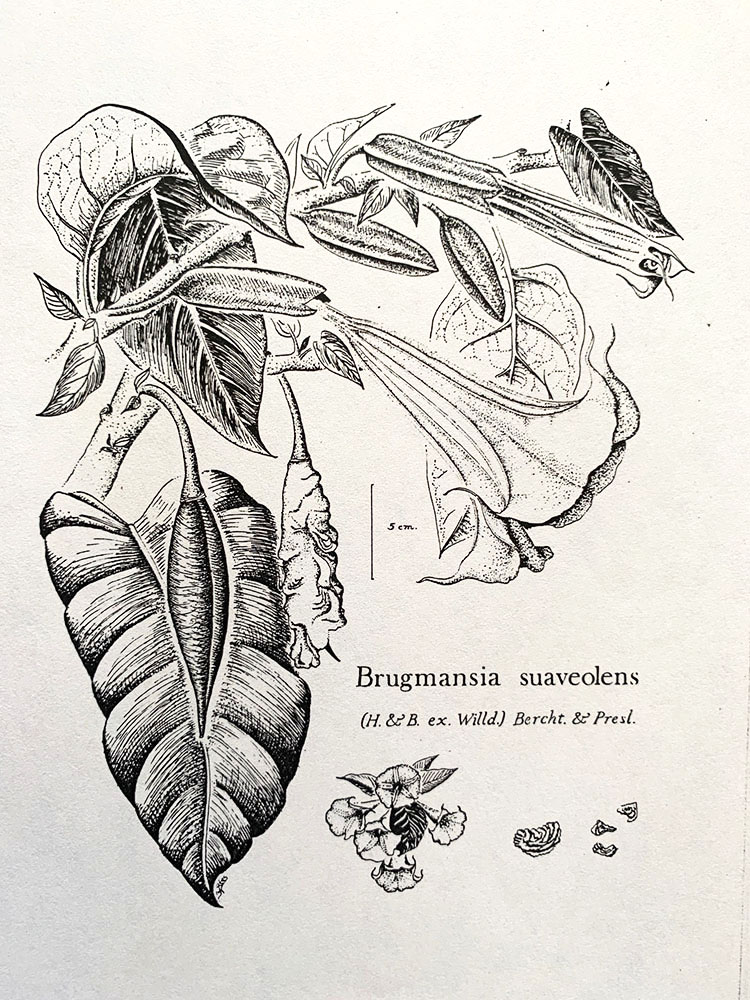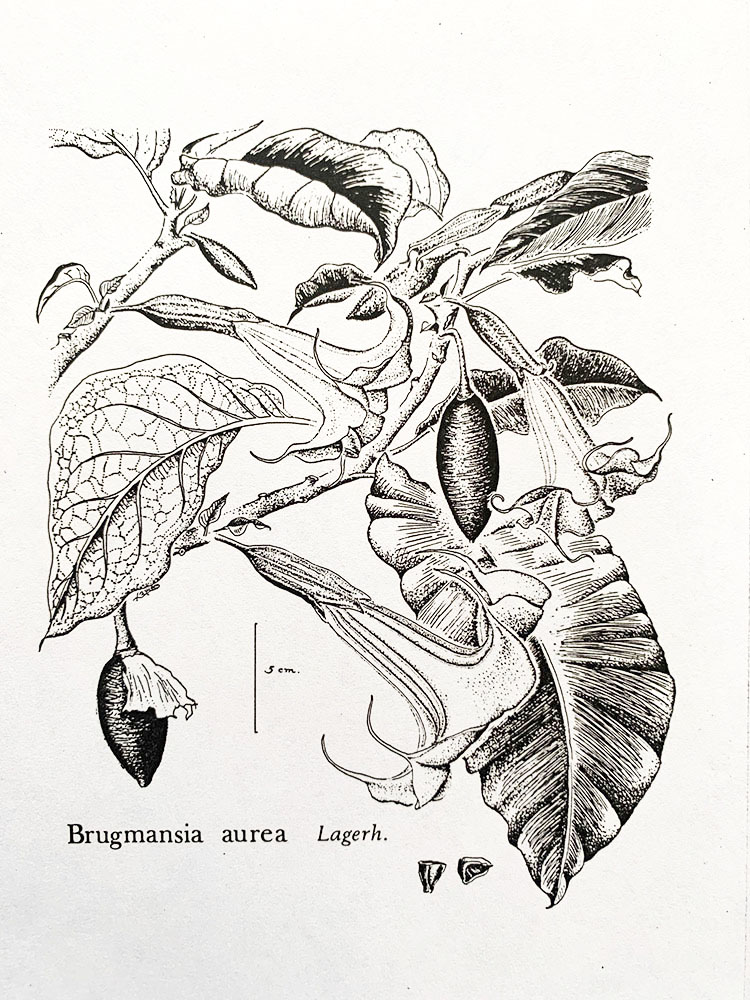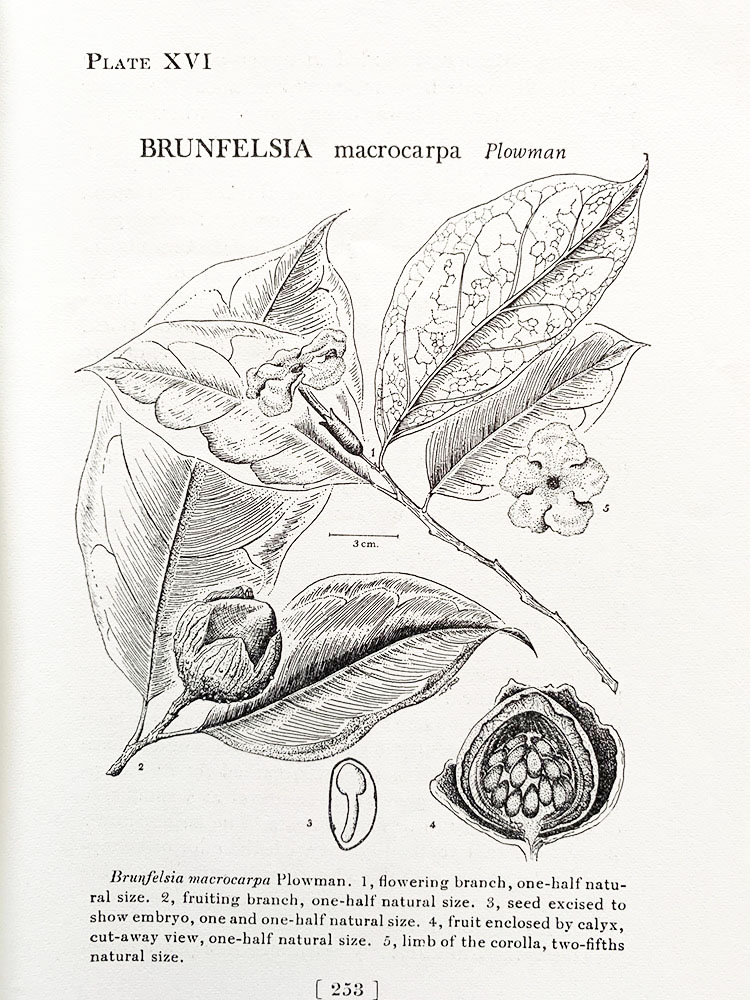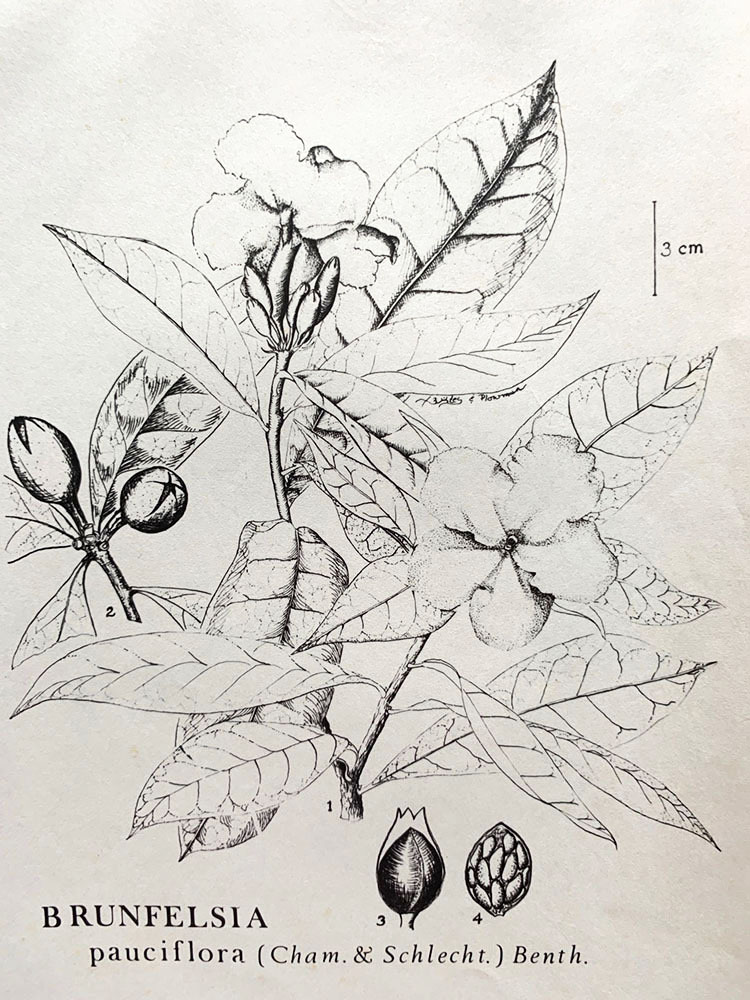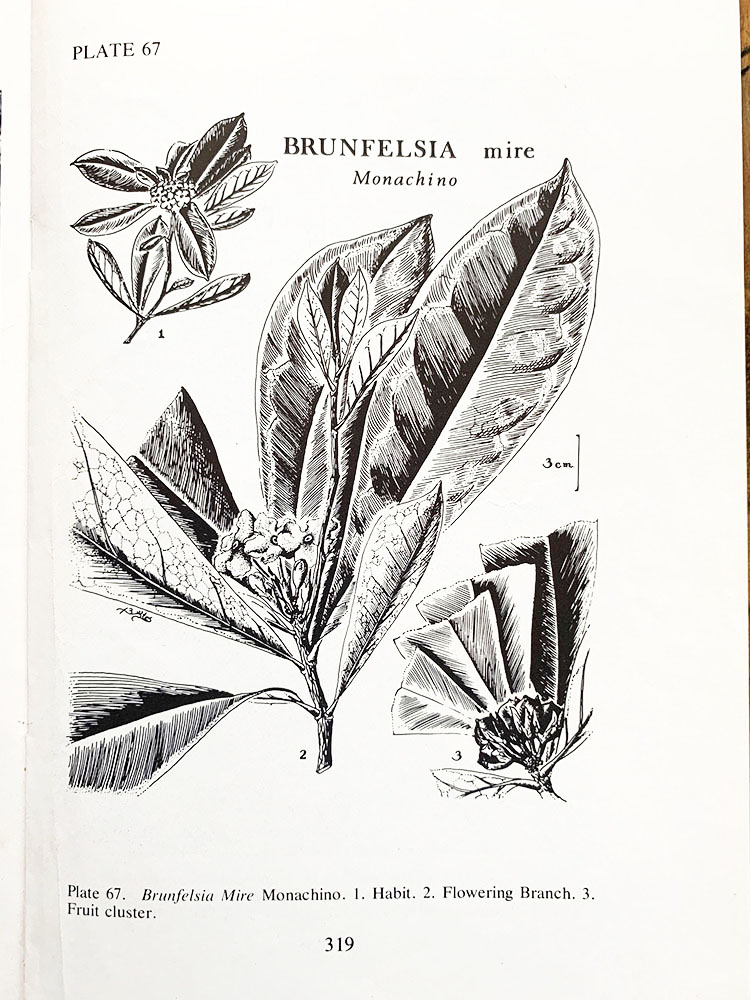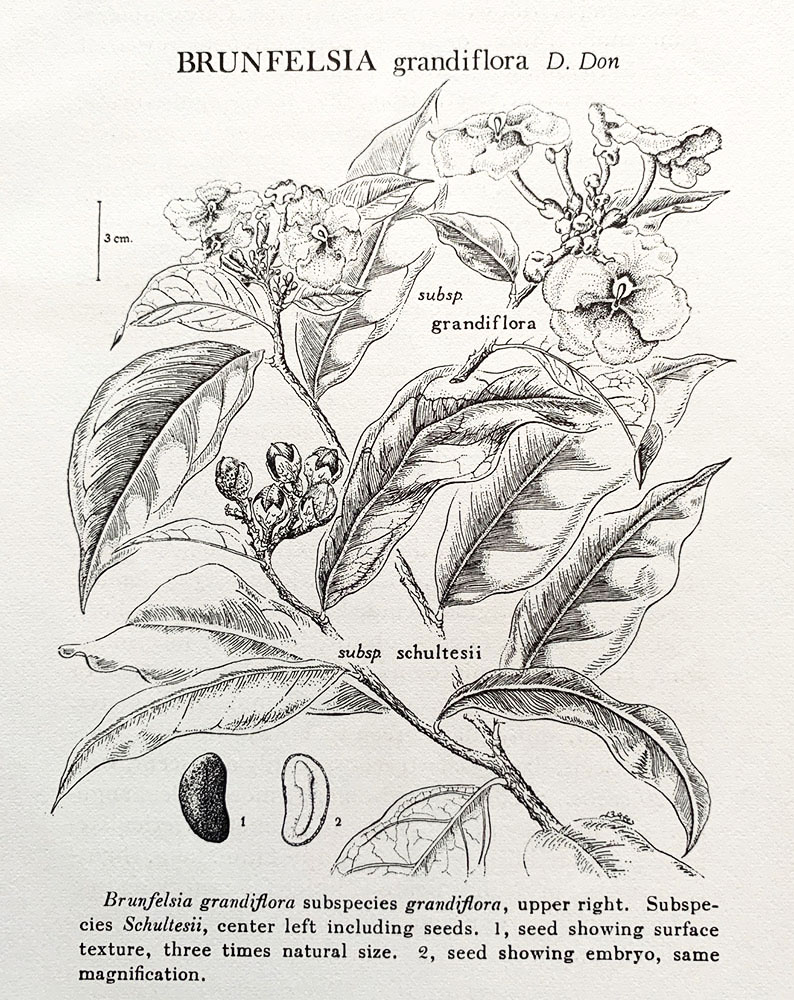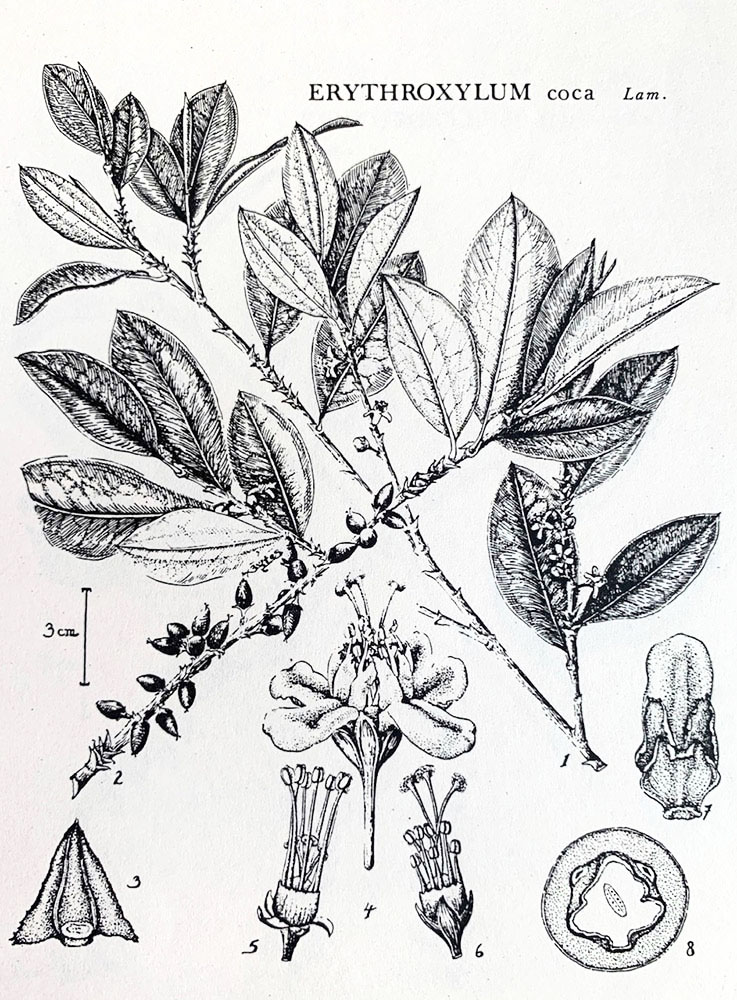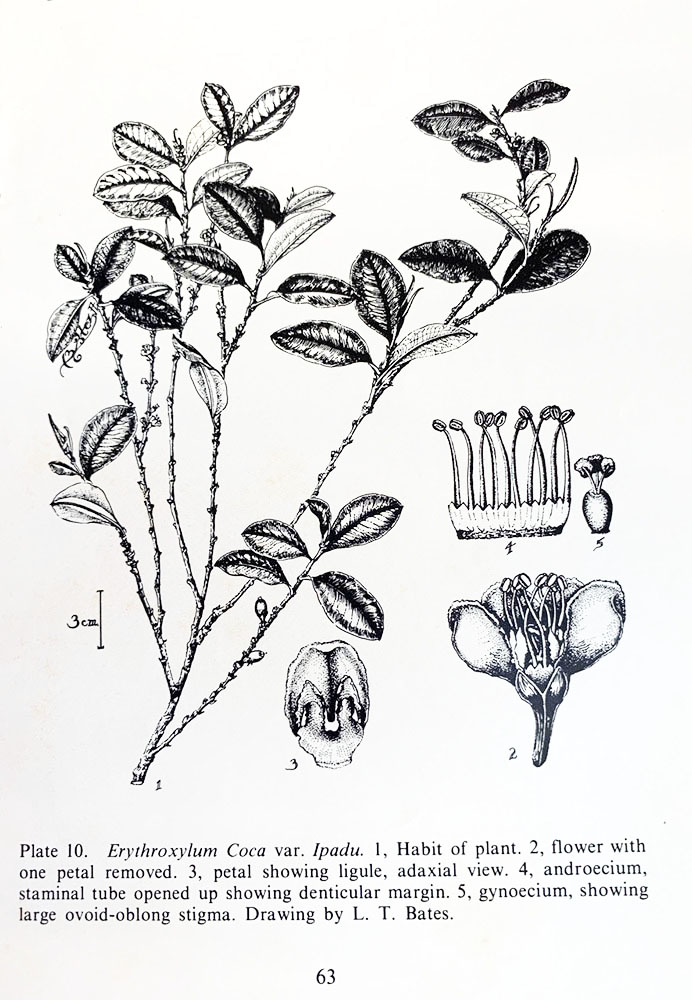Botanical Illustrations
In the 1970s, black-ink botanical illustrations at Harvard University were commissioned by PhD candidates in botany. Many related species were included within each PhD thesis for the genus Brunfelsia (Dr. Timothy Plowman) and for Brugmansia (Dr. Tommie E. Lockwood), both plants in the nightshade family of Solanaceae. Other illustrations were done for a Harvard U. and U.S. Federal Government research project on Erythroxylum, whose best known family member is coca, “the sacred leaf of the Andes.” Responding to the concurrent American drug problem, this in-depth report was commissioned by the government to trace the origins and geographical dispersal of coca, from which the nefariously infamous cocaine is derived. Requiring a year-long field trip to regions of coca-production in South America (Colombia, Brazil, Peru, Ecuador) by Timothy Plowman and Wade Davis. The subsequent report was compiled under the guidance of Richard Evans Schultes, the originator of ethnobotany: the study of how plants affect humankind.
Some additional publications in which the botanical work is included:
- “Botanical Museum Leaflet”; many by T. Plowman; T. Lockwood; Harvard University, 1970-80.
- “Plants of the Gods”; Richard Evans Schultes and Albert Hoffman; McGraw-Hill, 1979.
- “Journal of Ethnopharmacology”, Amazonian Coca by T. Plowman, 1981; Ethnobotany of Brugmansia by T. E. Lockwood, 1979; Elsevier Sequoia, S.A.
- “One River”; Wade Davis; Simon and Schuster, 1997: “She draws like the wind.”
